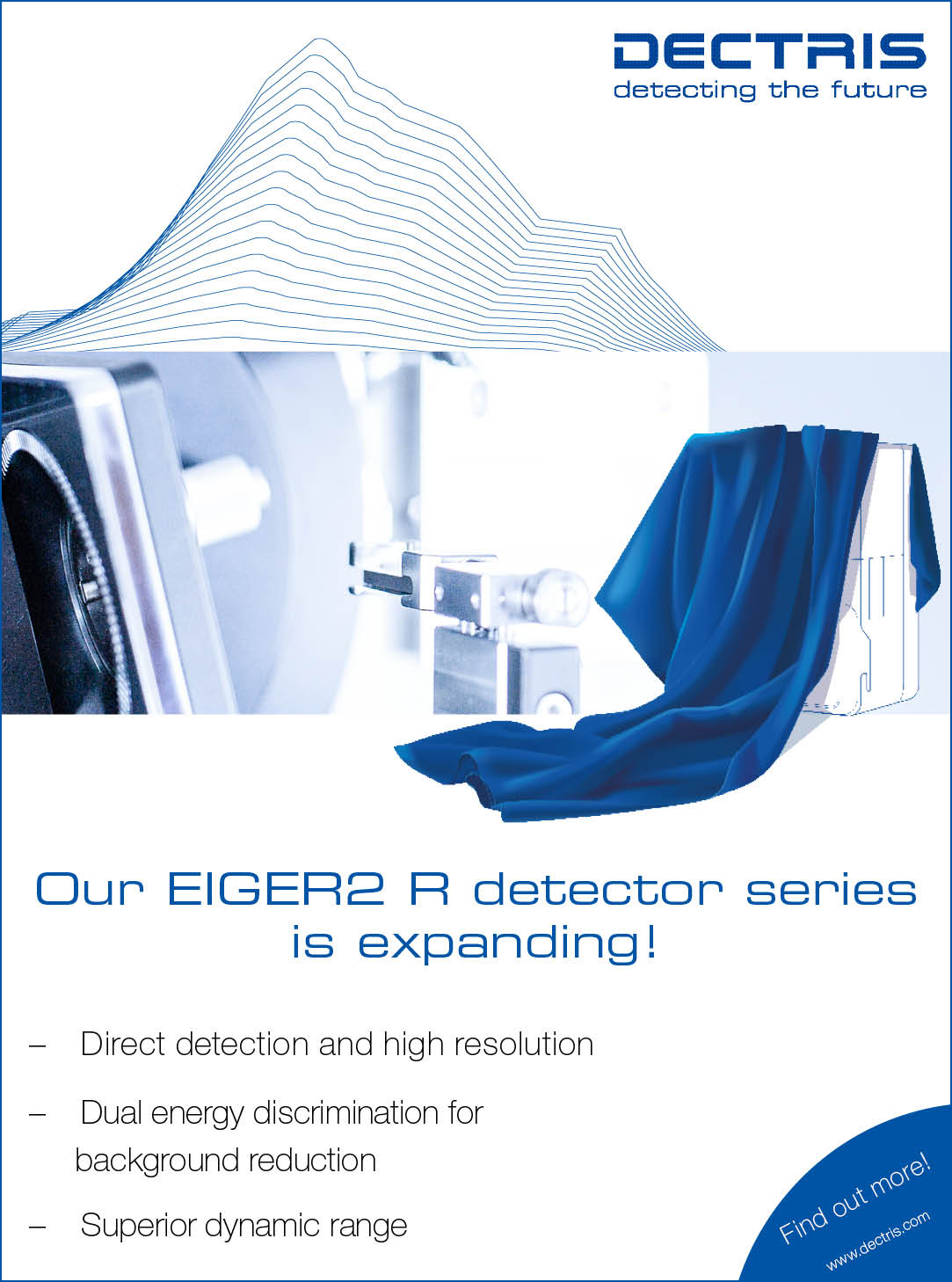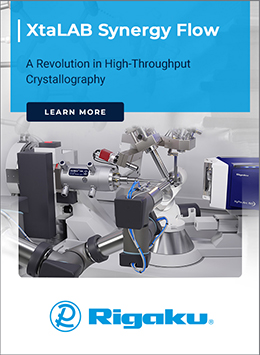
Special report
The ESRF-EBS (Extremely Brilliant Source) is online!
![Thumbnail [Thumbnail]](https://www.iucr.org/__data/assets/image/0020/151094/thumbnail_final2.jpg)
After installing the first fourth-generation high-energy synchrotron radiation source in 2019 and commissioning in 2020, significantly shortened by the effects of the COVID-19 pandemic, the ESRF is now back with its new Extremely Brilliant Source (EBS) serving the international community of crystallographers with a performance exceeding expectations right from the start. The goal in terms of injection efficiency, emittance, beam current, lifetime and mean-time-between-failures have all been reached or surpassed. A recent example is shown in the synopsis in Fig. 1.
![[Fig. 1]](https://www.iucr.org/__data/assets/image/0020/151157/Figure-1.jpg) Figure 1. Synopsis of EBS operation.
Figure 1. Synopsis of EBS operation.
Core techniques for the crystallography community, such as macromolecular crystallography (MX) for structural biology or powder diffraction, are strongly benefitting from both the dramatically improved source performance as well as numerous upgrades in beamline instrumentation (optics, sample manipulation, detectors). New and previously more exotic techniques, such as crystallography employing the full 3D reciprocal space or spatially resolved crystallography (XRD-CT, PDF-CT), should become routine with this largely improved set of tools for the X-ray crystallographer.
Structural biology
The smaller, much brighter X-ray beams provided by ESRF-EBS are a double-edged sword as far as MX experiments are concerned. Coupled with appropriate detector technology, robotics and automation, the EBS X-ray beams of the six ESRF MX beamlines provide much faster ‘routine’ oscillation data from smaller single crystals and, at the same time, allow a finer sampling when searching for the diffraction ‘sweet spots’ of larger crystals. Both aspects improve signal-to-noise ratios and throughput for a wide range of projects, including those aimed at structure-based drug design. Conversely, increased flux densities call for proper experiment design to deal with radiation damage in single-crystal MX, which is now becoming even more critical than it was before.
For very small crystals, even proper experiment design does not allow for the collection of complete diffraction data sets of a sufficient resolution for meaningful structure analysis. Here, serial crystallography is the saviour. Synchrotron serial crystallography (SSX) experiments – inspired by serial femtosecond crystallography (SFX) developed at X-FEL sources – will become increasingly common, as will multi-crystal data collection (MXD) techniques. For the latter, small, partial oscillation-based data sets collected from 10s to 100s of crystals are combined to produce the final data set.
ESRF-EBS will also help to nurture and develop the current renaissance in time-resolved MX, which aims at the structural analysis of biological macromolecules while they are in action. While much of this will be based on SSX techniques (TR-SSX), studies exploiting serial oscillation crystallography (TR-SOX, see Fig. 2) will also become more prevalent, building on recent advances made at the ESRF. TR-SSX, TR-SOX and even TR-MXD experiments are the domain of a new beamline under construction as part of the EBS upgrade project. This new MX beamline, coming online in 2022, will provide up to 1016 photons/second in a spot of approximately 1µm diameter. This will be (by far) the most brilliant resource for MX at a synchrotron source, both complementing and exceeding the capabilities available at ID09.
![[Fig. 2]](https://www.iucr.org/__data/assets/image/0003/151158/Fig.-2.png) Figure 2. Results from a TR-SOX study of the activation mechanism of AtPhot2LOV2: time evolution of the relative occupancies of key residues upon blue-light illumination. For more information, see Figure 5 by Aumonier et al. (2020).
Figure 2. Results from a TR-SOX study of the activation mechanism of AtPhot2LOV2: time evolution of the relative occupancies of key residues upon blue-light illumination. For more information, see Figure 5 by Aumonier et al. (2020).
Powder diffraction
Beamline ID22, the ESRF’s flagship for high-resolution powder diffraction, benefits from a strongly increased incident flux from its new in-vacuum undulator, especially at higher energies, and the upgrade of the detector system. A new set of 13 analyser crystals coupled with a spatially-resolving pixel array detector (DECTRIS Eiger2 X CdTe 2M-W) provides increased resolution and counting statistics by controlling the horizontal dimension of the signal integration box from each of the 13 crystal analysers. This leads to a more symmetric peak shape and improvement in overall angular resolution while exploiting at the same time a wider integration box at higher angles for improved counting statistics and reduced data acquisition time. Other advantages include the reduction in parasitic scattering or the filtering of very bright pixels produced by large grains or single crystals in the sample, thus improving the powder average. In the future, one might even exploit the single-crystal signals for further refinement of structural models or reach a high degree of depth resolution through the sample. Upon removal of the analyser crystals, the detector also enables highly efficient collection of high-quality, lower-resolution data for techniques such as PDF analysis. Overall, an increase of an order of magnitude in performance is calling for exploitation by the community of X-ray crystallographers.
Structure refinement from 3D reciprocal space data
Much information on the detailed atomic structure of materials, including their defects and local static and dynamic variations, is encoded in the scattering in 3D reciprocal space between the reciprocal lattice nodes employed in single crystal or powder diffraction. The ESRF operates a dedicated endstation on beamline ID28 optimized to study diffuse scattering (DS) throughout the entire reciprocal space, which is coupled to a high-resolution inelastic scattering instrument for the study of thermal excitations. The analysis of DS in 3D reciprocal space provides information on both static (elastic scattering) or dynamic deviations (inelastic or quasielastic scattering) from the long-range-ordered average structure (see Fig. 3). DS studies are particularly efficient when coupled with spectroscopic investigations and theoretical models. Specifically, a fast mapping of reciprocal space prior to an inelastic X-ray scattering (IXS) experiment allows the identification of regions of interest, which can then be explored in more detail by energy-resolved measurements. This concept can be successfully applied to a large range of materials ranging from soft organic crystals to strongly correlated systems.
![[FEBS lab]](https://www.iucr.org/__data/assets/image/0004/151159/Figure-3.png) Figure 3. Distribution of the scattered intensity in the hk2 plane of Sr0.75Ba0.25Nb2O6 at ambient temperature. Thermal diffuse scattering, correlated disorder in Nb−O chains and 2D incommensurate modulation with limited correlation length contribute to the diffuse-scattering pattern.
Figure 3. Distribution of the scattered intensity in the hk2 plane of Sr0.75Ba0.25Nb2O6 at ambient temperature. Thermal diffuse scattering, correlated disorder in Nb−O chains and 2D incommensurate modulation with limited correlation length contribute to the diffuse-scattering pattern.
The EBS upgrade enables a reduction in the X-ray beam size down to 5–10 µm for both ID28 branches, enabling data collection from individual grains of polycrystals, including samples under extreme conditions, and the resolution of the individual domains of twinned crystals. From a reverse point of view, for a given focal-spot size, the beam divergence is significantly reduced, thus improving momentum resolution, e.g. the investigation of very-long-range modulations or very small structural distortions.
Spatially resolved crystallography
The ESRF-EBS provides the photon flux and fast detectors to collect hundreds of 2D scattering/diffraction patterns per second. A full day of operation sometimes results in tens of millions of 2D images. This presents its own logistical challenges, but such large datasets offer new ways to study materials using X-ray diffraction-based computed tomographic imaging (XRD-CT). By scanning the beam across a sample and rotating it, one can measure projections of the scattering/diffraction in a sufficient number of directions to compute a tomographic image and retrieve diffraction patterns for each of an enormous number of voxels inside a sample. XRD-CT is straightforward to use when the data are isotropic in all directions (powders) but can also be used with single crystals if spots can be indexed. The spatial resolution is generally of the order of the X-ray beam size, which can range from hundreds of microns down to tens of nanometres, depending on the beamline and optics.
One of the most powerful applications of powder XRD-CT is to separate phase-pure materials in a mixture via their location inside a working device. Therefore, it is ideal for the study of catalysts or battery materials under realistic operating conditions by obtaining a series of reconstructed volumes to follow chemical reactions in different parts of the sample. The EBS source combined with the latest generation of short-period, small-gap, cryogenically cooled, in-vacuum undulators, e.g. at beamlines such as ID15A and ID31, dramatically improves the flux and flux density of high-energy X-rays required to pass through bulky samples. It also allows an increase of the Q range for the application of PDF techniques with 4D resolution. The weak signals at high Q, in particular, provide an atomic-resolution picture of the structure for both amorphous and crystalline components of a sample.
The extremely small size of the ESRF-EBS X-ray beams can also convert a typical “powder” sample into a collection of single crystals. Choosing and mounting tiny crystals can be very difficult. Employing high-energy X-rays on solid materials, one can then use XRD-CT techniques to harvest diffraction spots instead of powder patterns. After the spots are indexed, the peak positions can be used to recover internal strain fields within the sample, map spatial variations in the crystal structure, or locate and characterise trace components. For beam-sensitive crystals and phase-pure samples, such data can be used for a “serial crystallography” approach to structure solution and refinement.
In summary, the performance increase enabled by ESRF-EBS represents a big opportunity for major advances in crystallography and an expansion of crystallography into new dimensions in time and space.
Reference
Harald Reichert is Director of Research in Physical Sciences at the ESRF.
Copyright © - All Rights Reserved - International Union of Crystallography








